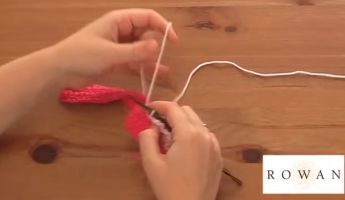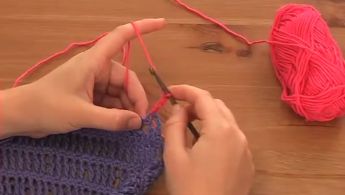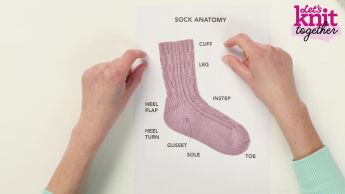How to: work a central double decrease stitch (cdc)
video by
Let's Knit Together
- Overview
- Practical Guides
This decrease creates a neat decrease that doesn’t produce a slant to the left or the right. This means it’s useful for producing small tucks within a row, as opposed to other decreases like k2tog and skpo that help to shape edges.
We’re working our central decrease on the right side of stocking stitch, and you’ll see that the columns below the central stitch seem to merge behind it into one, while the centre stitch sits on top. The central V stitch that is made almost looks like it’s wearing a collar, and you can feel the cdc stitch is thicker than the ones round it. As ever, follow your pattern until it tells you to work a cdc, like this: - slip 2 together knitwise, ie treat two stitches as one - insert the RH needle behind 2nd st and lift off - knit 1 - pick up 2 slipped sts with LH needle and pass back over last knitted st and off the needle In short, slip two together knitwise, knit one, pass two slip stitches over, which may also be written as (sl2tog, k1, p2sso) If you slipped the 2 sts individually, the passed over sts would noticeably look like a left-leaning decrease, so a cdc really has it’s uses. The sts may appear gappy on the next row, but once purled the CDC will tighten up nicely.











































